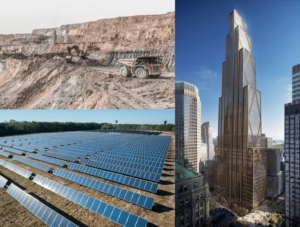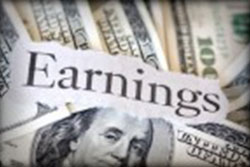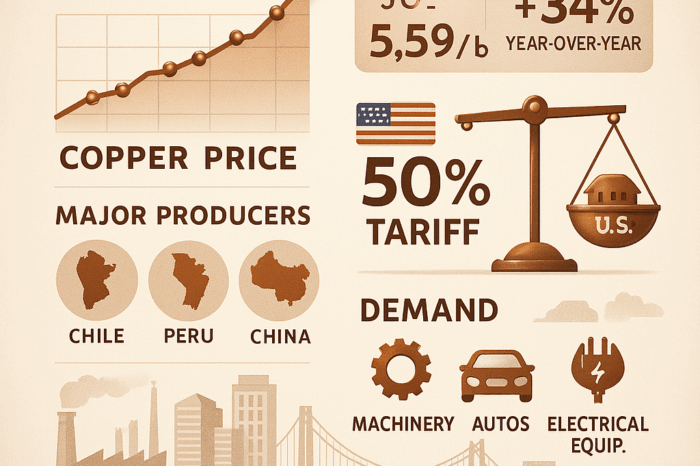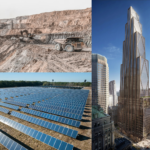Commodities are, and generate, “Green”

Copper Mines and Solar Energy Powering New Buildings (JP Morgan headquarters) resulting in green energy
John Gross, known as Dr. Copper, authors a weekly newsletter providing significant information on many commodities. He frequently adds some commentary in introduction highlighting some trends. In this week’s issue he shared:
“The last time we looked, WTI crude oil closed at $98.26, but on Thursday, it finished the day and week at $106.95, up more than $8, with the year-to-date price up 42%, and the yr/yr price is nearly 70% higher. The move in natural gas, in percentage terms is even worse. Last week it rose $1.02, or 16%, the YTD gain is 96%, while yr/yr it is up $4.62, or 172% – now that’s inflation.
It’s difficult if not impossible to delineate how much of the higher prices are influenced by the war in Europe and sanctions on Russia’s oil and gas, as opposed to other fundamental and speculative factors, but in the end, it makes little difference. The fact is, everyone, everywhere is paying higher prices, and the world will need more oil and gas produced until market balance is restored.
To this point, the Biden administration, under pressure to reduce high prices has already begun releasing oil from the strategic reserve, and last week announced plans to resume oil and gas development projects on federal land. As might be expected, environmental groups are not pleased with this decision. But there are other forces at work that will help in the longer term to reduce our dependence on fossil fuels.
Last week, JP Morgan announced plans to develop a new headquarters building in New York, that will be totally reliant on electricity generated by hydroelectric power. The 1,388-foot skyscraper, 60 stories high will have net-zero emissions, and will be the largest building in New York to go all electric.
A few other projects of note: 1) The Champlain Hudson Power Express will bring electricity generated by hydropower in Quebec, along a 340-mile transmission line to NYC, 2) Clean Path New York will bring electricity generated by solar, wind, and hydropower, 175 miles away to NYC, and is expected to come on line in 2027.
It would be nice and neat to say these projects and others around the country will solve all of our problems, but of course that is not the case. A few months ago, voters in Maine rejected a near $1 billion power transmission system that would have provided power from Hydro-Quebec to Massachusetts. The citizens of Maine essentially compared it to an extension cord stretched through their land for the benefit of Massachusetts.
Over in the wind turbine sector, we learn that more than a few energy companies are being heavily fined because birds were killed by their giant blades. What should the companies do? And in the airline department, Alia, an experimental electric vertical takeoff aircraft, will run on a battery instead of jet fuel. It is being built by Beta, an aviation tech startup that has gotten the attention of the military and package delivery service companies.
No discussion about the green energy conversion that depends upon copper, aluminum, nickel, cobalt and lithium would be complete without also saying that we don’t have the necessary capacity to make the conversion happen in the near term. This may be true, but we don’t doubt for a moment, that some kids working in a garage somewhere are looking at alternative materials to make fast charging and longer lasting batteries from a new process, or invention. Never say never.
In 1931, Dick Tracy, the comic strip detective character came out. By 1946, he had the first two-way radio wristwatch. Here we are 75 years later, and many people are wearing Apple’s reincarnation of Dick Tracy’s watch.”
And copper mines are going “green”. Here’s an article about a mine in Zambia planning a $500 million investment into wind and solar generation.
In reading his write-up, some thoughts:
- The correlation of commodity pricing, especially copper, with green energy conservation. The impact of this, for the electrical industry is that copper prices will not revert to pre-pandemic pricing due to supply and demand issues. In fact there is concern about a copper supply crunch and a 10 million ton shortage by 2030. This changes the copper pricing dynamic significantly as historically economic conditions were a significant contributor to the pricing dynamic. Now, beyond construction and manufacturing, power generation, electric vehicles and “green” dynamics need to be factored into copper pricing.
- The New York initiatives, and John lives in the New York area, are symbolic of major construction projects that are “going green”. What does this mean for the electrical industry?
- Which contractors are working on these? Most likely the largest.
- Given the unique needs of these facilities, it can be assumed that key manufacturers are involved early in the process, hence being “speced” in?
- With more utilities, and others, investing in renewable power generation, it can be assumed that much of the material is being purchased direct. But there is a need for other material to support the installations. But, as utilities goes, future smaller projects for commercial and industrial facilities will follow. The need for power storage will increase. A product offering for reps and distributors, similar to how many are now representing EV charging systems?
- How does the “green energy conversion” and “green building” interest change selected manufacturer marketing? Which tradeshows to start attending? Associations to join? Information to share with reps, distributors and contractors?
- And can distributors become the “go to” resource in their local market to support developers, architects, engineers, and then contractors. As a “go to” the key is providing information and then material.
- Or will manufacturers seek other channels (and they are emerging) to support this market. In some cases these other channels will involve “direct” or it will be manufacturers who have no idea what an independent manufacturer rep or an electrical distributor is (and they won’t price with enough margin to go back and add in these roles). Remember, these are “new” technologies so they will have an interest / affinity to use “new” sales approaches (i.e. direct and direct via the web).
So, it begs the question of “who is responsible for your emerging markets and emerging technologies / products” initiative? Who has interest in these areas to at least do some exploration? It may not represent a significant percent of sales today, but it quickly could.
And, with green energy, there will be more “green” generated from copper.























